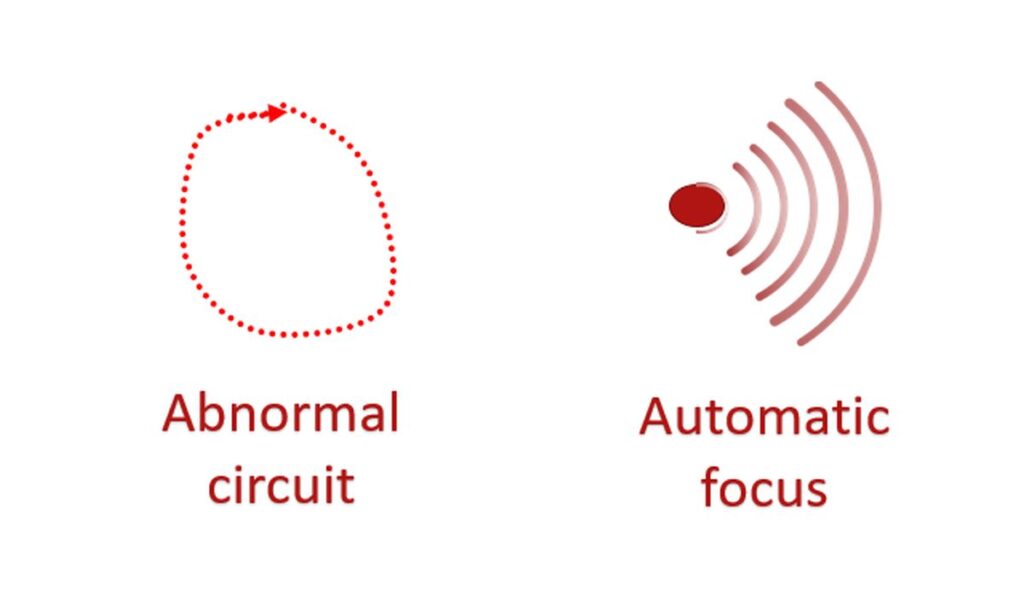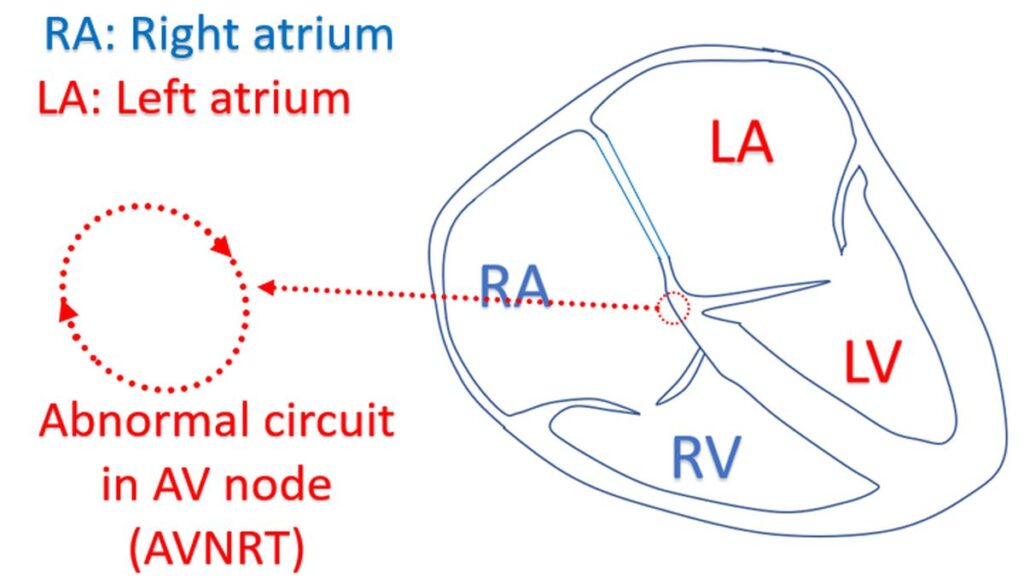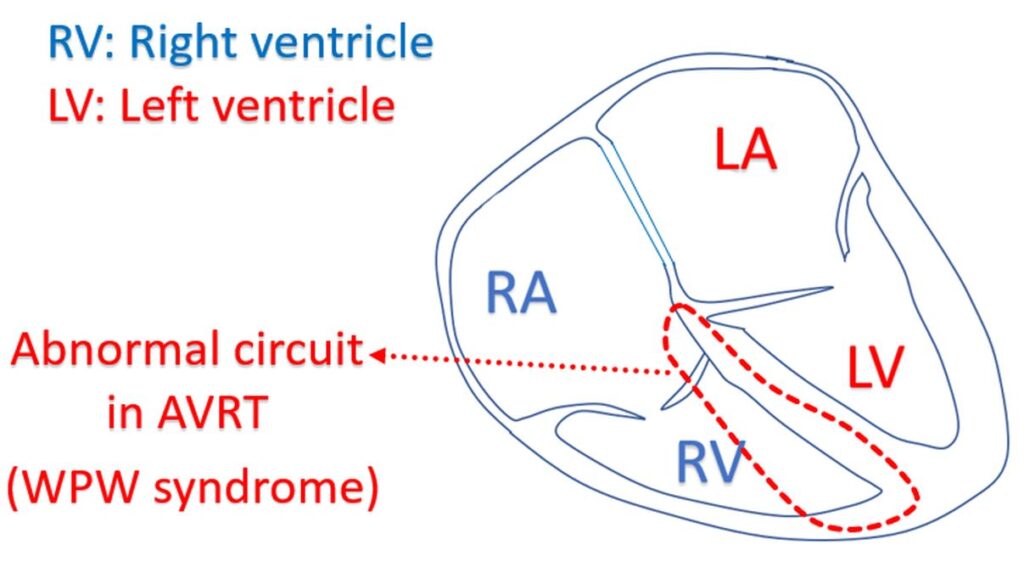What is supraventricular tachycardia?
What is supraventricular tachycardia?
Supraventricular tachycardia is a fast rhythm originating from the upper chambers of the heart. Normal heart rhythm originates from the sinus node, the natural pacemaker of the heart. Sinus node is located at the upper part of the right upper chamber of the heart, right atrium. Normal heart rate in a resting person ranges from 60-100/minute. The rate of supraventricular tachycardia is around 200/min and it can originate at any part of the heart above the ventricles. Supraventricular means above the ventricles. Ventricles are the lower chambers of the heart.
Supraventricular tachycardia can be due to abnormal circuits of electrical waves or due to increased automaticity of certain regions of the upper chambers. Those due to abnormal circuits are known as re-entrant tachycardias. Tachy means fast and tachycardia means a fast rhythm of the heart. Tachycardias due to enhanced automaticity are called ectopic atrial tachycardias. Ectopic means the origin is not from the normal site, namely the sinus node. Atrial means in relation to the atrium, the upper chamber of the heart.

Two types of abnormal electrical circuits are commonly seen in supraventricular tachycardia. One is an abnormal circuit within the atrioventricular node (AV node) situated at the junction of the upper and lower chambers. This type is called atrioventricular nodal re-entrant tachycardia (AVNRT). This is the commonest variety of supraventricular tachycardia in adults.

The other type is due to accessory pathways which connect the upper chambers to the lower chambers, known as bypass tracts, which bypass the AV node. This type is also called Wolff-Parkinson-White syndrome (WPW syndrome) after the persons who described it. In this disorder, the electrical signals travel down either through the normal AV node to the ventricles and return through the abnormal accessory pathway to the atrium or vice versa. This rapid circuit movement causes a very fast heart rhythm, which is felt by the person as palpitation. Supraventricular tachycardia due to accessory pathways are called atrioventricular re-entrant tachycardia (AVRT). It is the commonest variety in children.

Supraventricular tachycardias are generally less dangerous than ventricular tachycardias which originate from the lower chambers. It is only rarely that they produce dizziness or fall in blood pressure. They may go on like that for days or weeks with only mild symptoms. But if they persist long, the heart muscle may become weakened due to fatigue and hence need early treatment. Supraventricular tachycardias associated with other structural heart disease can also be more dangerous.
Supraventricular tachycardia can be documented by an ECG (recording of electrical activity of the heart). Sometimes they can be terminated by certain simple procedures like inducing vomiting or pressure on the blood vessels of the neck done by a medical person. In infants, splashing ice-cold water on the face may also break the tachycardia. Those which are persisting, can be terminated by medications given as injections from the emergency department. Those who are getting recurrent episodes may also use tablets to terminate them slowly (“pill-in-the-pocket” approach), as per medical advice.
Once the tachycardia is terminated, a repeat ECG is taken to check for any evidence of abnormal conduction pathways like WPW syndrome. Further medical evaluation is also done to exclude associated structural heart disease. An X-ray of the chest may be done in adults. Echocardiogram (ultrasound study of the heart) will be useful to document any associated structural heart disease. If the abnormal heart rhythm had persisted for a long period, it would also check whether the pumping function of the heart has become weak. Even if it has become weak, it is usually reversible after control of the fast rhythm.
Preventive medications are given to avoid future episodes. Those who are not ready for long term medications and those who get recurrence while on treatment can be considered for a special test known as electrophysiology study (EP study). This will elucidate the mechanism of the abnormal heart rhythm and can be followed by catheter ablation. In catheter ablation, small wires introduced into the heart through blood vessels are used to produce targeted damage to tiny areas within the heart responsible for the abnormal rhythm. Catheter ablation for supraventricular tachycardia has a high success rate with a low rate of complications.



